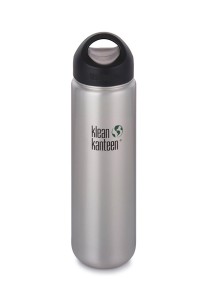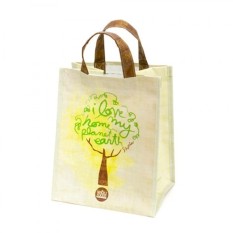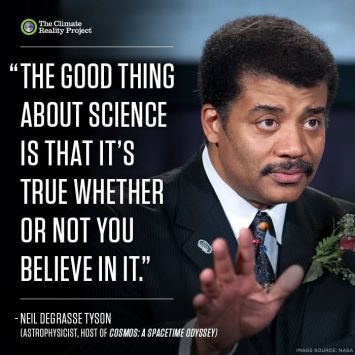Happy Earth Week!* Let’s all take a second to reflect on and give thanks to this wondrous planet we call home.

This picture was taken along the Village Walking Trail at Kapalua on Maui in November 2016. The trail you see here was the cart path along the old Village Golf Course, closed in 2007. When they built the new course, they decided to let nature reclaim this one, meaning that the vegetation you see here, already so full, lush, and overall jungly, was actually a fairway not that long ago. If you have the chance, I’d highly recommend stopping by; there are many different levels of difficulty available. The one we did was equally hilly and rewarding. Side note: read The World Without Us.
As I age and continue to read the horrifying stats about the shape of the planet, I find myself becoming increasingly concerned with my personal carbon footprint. Consequently, I’ve taken great strides to become a more conscious citizen of Earth in the last few years. I have also come to feel strongly that this needs to be a regular topic of conversation between friends and neighbors; sharing, educating, and spreading knowledge of how we can better care for our planet is the only way we will continue to make permanent positive changes.
Now, I recognize that this level of focus on the Earth’s health and well-being comes with a certain level of privilege. When you’re worried about meeting basic human needs, stopping to read a recycling label is certainly not going to be a priority. But for many of us, immediate personal convenience often trumps potential long-term ecological impact. Helping to save the Earth doesn’t necessarily mean you have to plant trees or contact your local legislator (although those things are important too!). Sometimes it’s rather simple. I’d encourage you to think really hard about the little things you do every day that may have bigger implications than you realize.

Don’t be like Titus.
[Source]
While I’m no behavior change psychologist, I’ve personally been most successful in making permanent changes when I start small. My goal in sharing the below list is that you may find something new to incorporate into your routine. Remember, every baby step you take is still a step forward.
*This isn’t really a thing, but since I dropped the ball by not getting this out on Sunday, I hereby proclaim the week following Earth Day to be Earth Week! Even better, let’s just go ahead and treat every week like Earth Week.
7 Simple, Eco-Friendly House Rules
1. Get yourself a reusable water bottle.
For real, this is 2017. There is no reason why you should still be using plastic water bottles. For one, they are expensive. Happily, in many cases, reducing your carbon footprint also means reducing your cash outflow. Secondly, multiple studies have proven that there is no real difference in quality between tap water and bottled water (most Americans have access to clean drinking water). In many cases, bottled water is actually just purified tap water. If you’re afraid to use the tap, just get a water filter for your fridge. Lastly, and very importantly, bottled water bottles produce a helluva lot of waste. According to Ban the Bottle, Americans recycle only 23% of plastic water bottles used, meaning 38.5 billion bottles flood our dumps each year.

I really like my Klean Kanteen because it’s a good product and because of the company’s mission to help people kick single-use habits.
2. Turn off your lights when they’re not in use.

This isn’t just a cool little Mormon trick!
[Source]
Just like the tip above, this one is not only good for the environment, but it saves money, too. My grandfather used to admonish me when I’d leave a trail of lights behind me, “Are you the one paying the electricity bill?” Now that I am, it sure feels good to keep the bill as low as possible. Especially since doing so means I’m helping to reduce wasted energy as well. While the amount of energy saved really depends on the type of bulb in question, suffice it to say it’s best practice to turn off any light that’s not needed.
That said, consider getting rid of your incandescent bulbs altogether. Of the energy they use, 90% is given off as heat and only 10% produces light. That is pretty horrible in terms of energy waste and it can also result in potential fire hazards, especially if the lights are left on for prolonged periods. You’re better off with compact fluorescent bulbs which, while more expensive upfront, will last longer, more efficiently consume energy, and save you more money in the long run. Learn more here or here.
3. Similarly, turn off and unplug appliances and electronics.
Simply put, if you’re not actively using an appliance, you don’t need to have it turned on (obviously the refrigerator and freezer are different). Mom, Dad, this is when I tell you again that Nestle does not need to watch TV while you’re gone. She just doesn’t.

[Source]
Also important to note, however, is that many appliances consume energy even when they are not turned on. While this “standby power” is sometimes helpful because it allows certain appliances to show a clock display, use a timer, etc., in many cases it’s wasted energy, consumed for no other reason than because that appliance is plugged in. According to the Three Actions Project and Energy Star, “the average household spends $100 per year to power devices while they are off (or in standby mode). On a national basis, standby power accounts for […] more than $10 billion in annual energy costs.”
There are a couple of easy ways to improve this. One, try to only plug in certain, more single-use items when you actually use them, like your toaster, coffee maker, phone or toothbrush charger. Two, group some appliances together with a power strip so they can all be unplugged at once, like your TV, cable box, and game console. Realistically you don’t need these things plugged in for more than a few hours at a time, and that way you don’t have to go through the hassle of re-plugging them individually.
4. Remember to stash your reusable shopping bags everywhere.
Even though I do reuse the ones I have as garbage bags for my bathrooms, plastic bags make me so anxious. They’re terrible for the environment, take thousands of years to break down, and are difficult and costly to recycle. (I like this list of reasons why they should be banned.) Thankfully, many cities are wising up and straight-up banning these flimsy atrocities altogether.
Also thankfully, there is a very easy alternative to the plastic bag and that is the increasingly present reusable shopping bag. They can be found at almost any retailer nowadays, and some stores are actually sending you away with their own branded version in lieu of any other type of bag. It’s not hard to accumulate quite the stash (in fact, I recently had to unload a bunch for the sake of storage space). What’s more difficult is actually remembering to bring them with you when you go shopping, especially for those unavoidable impromptu stops.
To combat this problem, I like to keep a few in the car and at least one in the stroller (since we walk so many places). I recommend you do the same!

I used to have this exact bag!
[Source]
5. Recycle, recycle, recycle (but do so responsibly).
First, become acquainted with what you can recycle, especially as it can vary by city (here’s Chicago’s guide or find your city’s here). Recycling can be surprisingly complicated, and unfortunately many of us (I’m definitely guilty of some of the no-nos) are aspirational yet misinformed recyclers, leading to increased contamination and, sadly, more trash. Some general tips?
- Don’t bag your recycling. Doing so often results in the entire bin going to the landfill instead. This also includes leaving the recyclables in brown paper bags. Shake them out first, then throw the bag in.
- Don’t recycle some of these common contamination culprits:
- Styrofoam
- Electronics
- Coffee cups
- Toys
- Plastic bags (some grocery stores recycle them, but home recyclers do not)
- Pizza boxes (unless you’ve removed the greasy parts)
- Anything stringy (like hoses or lights)
- Do rinse out your food containers before recycling. Again, anything greasy or filled with food could cause the whole bin to be thrown in the trash. Anytime you feel annoyed by the 30 seconds it will take to clean a container, think of how sad it would be to clog up the landfills instead. Yes, I even mean the damn peanut butter container. Think of the planet!

Well, maybe not that last one.
[Source]
6. If it’s yellow…
[Source]
This one is going to be more controversial, but I think that’s more because of baseless societal norms than logic itself. In fact, it’s a policy that can result in major water conservation.
According to Conserve H20, the average modern toilet uses 1.6 gallons of water per flush (older toilets can use up to four times more while high-efficiency toilets use 1.28 or less). Let’s say you have an up-to-par, modern toilet and pee at home six times a day (conservative by my standards). That means you’re flushing 9.6 gallons a day. If you only flush once every three pees, or twice in that same time period, that means you’re saving roughly 4.8 gallons a day, 33.6 gallons a week, 144 gallons a month, 1,752 gallons a year! Because there is “not an infinite supply of water,” it’s important to acknowledge what a huge impact we’d have on one of our most precious resources if more people started to save this much water each day with such a simple change.
And if you’re worried about cleanliness, don’t be. Assuming you have no sort of infection, are properly hydrated, and regularly clean your toilet, holding back on flushes for a couple of hours will have no impact on the cleanliness of your home. In fact, it might even increase it because the amount of toilet particles flying into the air upon flushing will be reduced. (Real talk. Can we make it a RULE that people have to close their toilet lids before flushing? If you think I’m gross for not flushing my pee each time, just know that I’m judging you for your poo splatter.)
7. Switch to all-natural cleaning supplies.
Despite what you think of me now after having read that above suggestion, I am a clean freak.

Please. Disorderly is different than dirty, okay?
[Source]
I love to clean. Strangely enough, cleaning bathrooms is one of my preferred chores. But since I’ve become more focused on greener living, I’ve had a hard time justifying the use of potentially dangerous chemicals to so. Instead, I’ve started to use one of the oldest tricks in the book: plain old water and vinegar. Now my go-to, all-purpose cleaner, I use it almost everywhere in our apartment (sigh, I still prefer Windex for glass). I use it on our floors (for the hardwood, I add a little olive oil), in our bathrooms, on our counters, on the door handles, to dust, even to help rinse off our fruits and veggies. Everywhere.
Aside from its ridiculously low cost (so incredibly cheap; out-of-the-ballpark cheaper than any solution found in stores), I rest much easier knowing that I’m not “cleaning” my apartment with chemicals that come with warning labels, or releasing said chemicals into our air or water supply. I’m not afraid my toddler, who has been known to lick random surfaces on occasion, is going to come across the bottle, and I’m not afraid to breathe the air when I clean. Win-win-win-win-win.

Here’s my set-up. It’s about 1/3 white vinegar and 2/3 water with a few drops of lemon oil (or lemon juice if I have a fresh lemon). I bought the nozzle from a gardening spritz bottle at the dollar store and just screwed it straight onto the vinegar bottle. I keep another vinegar bottle for refills.
A Few Other Simple Tricks
These don’t need much explanation, but are always worth mentioning.
- Turn off the water as you brush your teeth.
- Take shorter showers.
- Walk more and/or take public transportation if it’s available.
- Buy locally sourced produce and meat. Better yet, try eating less meat overall.
- Wash your clothes with cold water.
- Pay your bills online and unsubscribe from paper notices.
- Use your blinds accordingly to help regulate your home’s temperature (open during the winter and closed during the summer).
- Buy second-hand toys or toys made from recycled plastic (I love Green Toys).
Educate Yourself
All of these tips help make a difference in terms of eco-friendliness, but overall I want to stress the importance of mindfulness as it relates to energy consumption (something I continue to work toward every day). In general, I think we do a poor job of thinking where energy comes from when we’re going about our daily lives. Yet much of what we do requires some level of power and has some level of impact on the Earth.

[Source]
Remember, right now, most of our energy comes from burning fossil fuels (petroleum, coal, gas). Fossil fuels are high in carbon, so burning them produces a lot of carbon dioxide, a greenhouse gas that is a leading cause of global warming. Plus, while they are naturally formed, we consider them to be non-renewable resources because the process by which they are formed takes millions of years and, no surprise, we are going through them much faster than that.
The bad news is that we simply don’t have time to waste on the climate change denial crisis going on. But…

[Source]
The good news is that there is a concerted effort taking place by many of the world’s top scientists to increase the efficiency, cost effectiveness, and prevalence of renewable resources, and it led to record high wind and solar production in 2015.
Long story short, there are things we can all be doing better to help improve the quality of our planet. The only way it will get better is if we all start to think outside of ourselves a little more and do the best we can, now.
What’s Next?
First, I will take a deep breath. If I already felt a little panicky about the state of our environment, doing research for this article sure as hell did not help the matter.

Not me.
[Source]
Okay.
Now, I must remind myself that becoming greener is an ongoing process. Even the above tips, which I already practice regularly, can be improved and refined. For example, I’m terrible about unplugging my phone charger each time I’m done with it. I also just now learned some of the important rules of proper recycling.
There are also countless ways I can continue to build on and enhance my personal eco initiative. I shamefully admit my dependence on paper towels and napkins. In the coming months, I’d really like to work on this, especially because we already have some of these adorable “unpaper towels.”
For more ideas of how you can reduce your carbon footprint, check out some of these lists.
Do you feel jazzed about the environment now? Because I do! Let’s do this people!

Raymond Holt is hands down one of the best characters on television. If you don’t watch Brooklyn Nine-Nine, you aren’t doing it right. I also firmly believe he’d do everything in his power to reduce his carbon footprint.
[Source]
What are your favorite eco-friendly tips?

